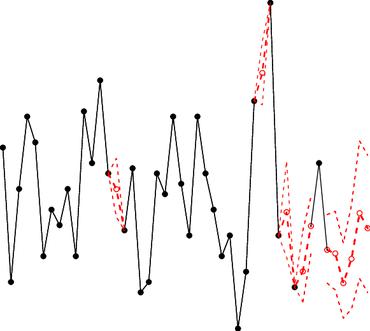One-dimensional Deep Image Prior for Time Series Inverse Problems
We extend the Deep Image Prior (DIP) framework to one-dimensional signals. DIP is using a randomly initialized convolutional neural network (CNN) to solve linear inverse problems by optimizing over weights to fit the observed measurements. Our main finding is that properly tuned one-dimensional convolutional architectures provide an excellent Deep Image Prior for various types of temporal signals including audio, biological signals, and sensor measurements. We show that our network can be used in a variety of recovery tasks including missing value imputation, blind denoising, and compressed sensing from random Gaussian projections. The key challenge is how to avoid overfitting by carefully tuning early stopping, total variation, and weight decay regularization. Our method requires up to 4 times fewer measurements than Lasso and outperforms NLM-VAMP for random Gaussian measurements on audio signals, has similar imputation performance to a Kalman state-space model on a variety of data, and outperforms wavelet filtering in removing additive noise from air-quality sensor readings.
PDF Abstract



